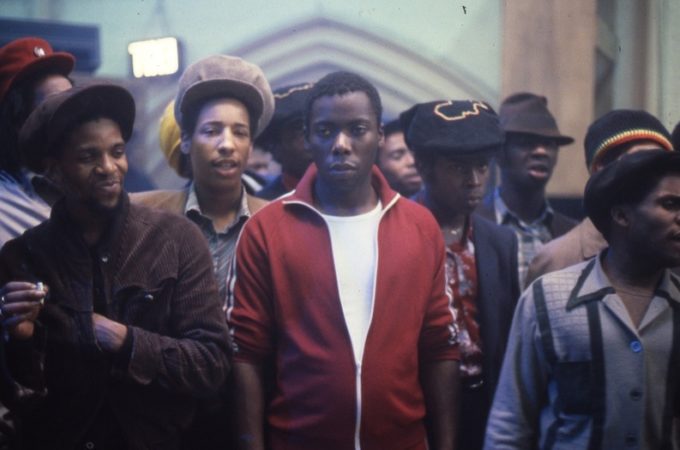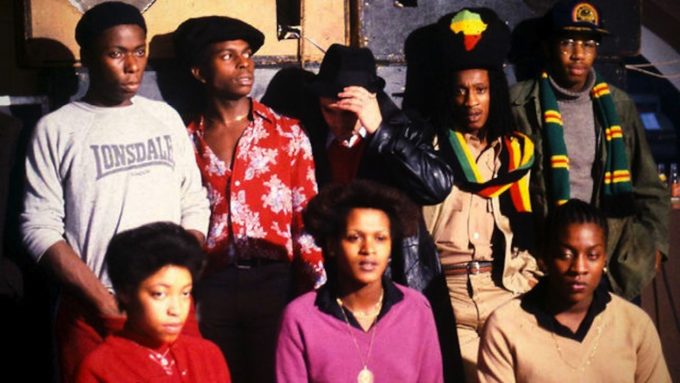

This Saturday we will be screening Babylon (1980) as part of the Brighton’s Cine-City. The screening will be followed by a roundtable chaired by the music historian Kelly Foster with Paul Goodwin (Chelsea College of Arts) and Mykaell Riley (University of Westminster).
In advance of the discussion, event organiser Professor Martin Evans of the University of Sussex asked Kelly and Paul why Babylon still resonates today.
Kelly:
Babylon gives us a glimpse into the lives of young Black Londoners on the brink of the descent into a Thatcherite future. It offers the viewer a peek into the shared experiences that would fuel the resistance against state oppression and racism, in the same communities where it was shot, in the 1980s. In 1980 and 1981, in St Pauls, Toxeth, Moss Side, New Cross, Chapeltown, and Brixton - the people rose up.
The grimy, hopeless and violent London of the film is sometimes difficult to recognise amid the shiny, gentrified streets of 2017. Soho, Brixton and Deptford all look very different now. Three years before the film was released two of the main locations where it was shot, The Moonshot Club and Albany Theatre in Deptford, were gutted by racist arson attacks. On Sunday 18 January 1981, 13 young Black people between the ages of 14 and 22 were killed in an arson attack at a 16th birthday party. “13 Dead And Nothing Said” was the slogan as 20,000 Black people marched in the Black People’s Day of Action on 2 March 1981 called by the New Cross Massacre Action Committee. To this day no one has ever been charged with their deaths. The “Warriors Charge” heard in the final scene would be echoed by a generation of young people whose refusal to be oppressed would change the face of Britain.
By the time the film in 1980, Sound System culture in the UK has about 25 years old. Babylon is a reminder, of something I often take for granted, of how Sound System culture permeated through the lives of so many African Caribbean people in the UK - from front room to church hall to shubeen (which would often take place either of the former spaces). Babylon is a document of a next generation of “sound man” finding their place in the culture.
Paul:
This film is important because it remains a seminal documentation and representation of the culture of reggae sounds systems as well as the situation of racism, police violence and working class inter-ethnic politics in the late 1970s in South London. The film’s realism - both visual and in its soundtrack - is a strong part of it’s lasting appeal: from authentic Jamaican and black English accents of the excellent cast to the incredible dancehall scenes featuring real life sound system legends like Jah Shaka.
The film essentially depicts London - or rather South London (Deptford and Brixton to be precise) - before globalisation and gentrification. This was a city that was very much ‘local’ so that the rough edges, run down tower blocks and back alleys of South London contrasted starkly with the bright lights and neons in the scenes shot in the centre of London. London back then was a collection of ‘villages’ with each area having very separate characteristics and landscapes according to class and wealth, while today’s London is very much a hub of ‘global’ culture where new high rise luxury developments and glass fronted buildings can be found in most areas of the city.
The depiction of dancehall and sound system culture revolved around several key features: the obssession with technology and an innovative DIY culture of creating bespoke speakers, equipment and music tracks (‘dub specials’); the fiercely competitive nature of sound clashes; the ‘culture of resistance’ that emerged from the influence of Rastafarian music, culture and spirituality in the 1970s; and the constant battle with hostile and racist forces (Police, racist neighbours) that wilfully misunderstood sound systems within the context of politicised debates around ‘race’ and immigration in the 1970s and saw them as threats to ‘law and order’ and ‘respectable’ neighbourhoods.